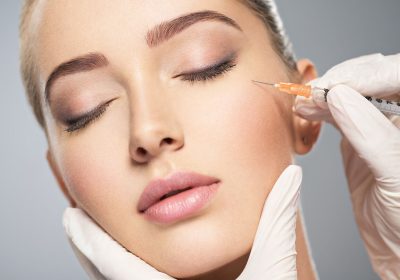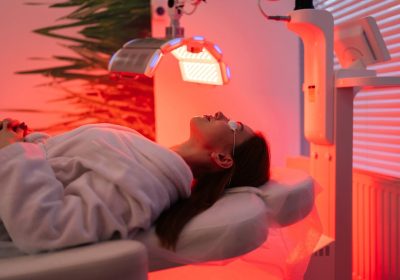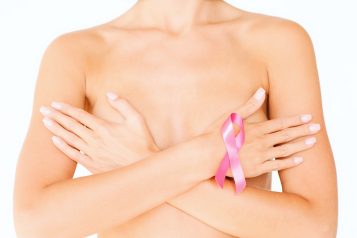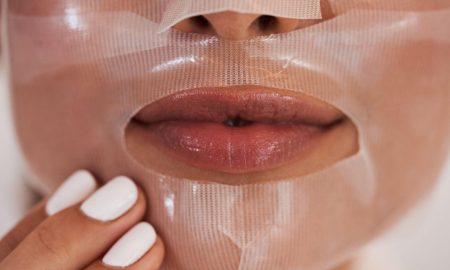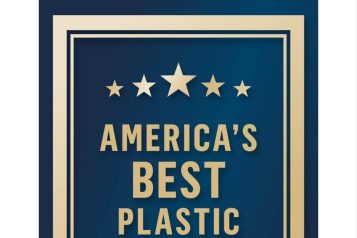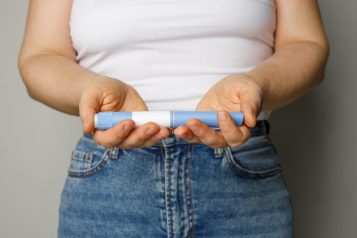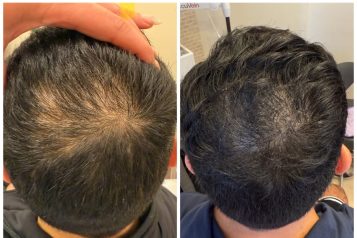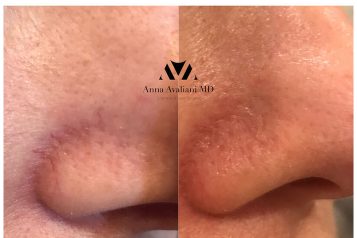Elizabeth Laikhter co-authored this article.
Dr. Samuel Lin is a double board-certified Plastic Surgeon and Associate Professor of Surgery at Harvard Medical School who practices in Boston, Massachusetts. Dr. Lin received his Bachelor’s degree in Biomedical Engineering at Northwestern University and was enrolled in the Honors Program for Medical Education at Northwestern University, Feinberg School of Medicine, Chicago, Illinois. Dr. Lin completed a one-year fellowship appointment in Microvascular Reconstructive Surgery at the world-renowned University of Texas M.D. Anderson Cancer Center in Houston, Texas. He has also been named a Top Influencer in #PlasticSurgery. Dr. Lin is board certified by both the American Board of Plastic Surgery and the American Board of Otolaryngology-Head and Neck Surgery. Dr. Lin is board certified by two ABMS boards. He is Program Director of the BIDMC-Harvard Plastic and Reconstructive Surgery residency, and Co-Director of the Harvard Aesthetic and Reconstructive Plastic Surgery Fellowship at BIDMC. Dr. Lin was awarded the recipient of a “Mentoring Award,” by Harvard Medical School through a special nomination process which is sent out to all Harvard faculty members, house officers, fellows, and students. He has been a Boston “Top Doc” for several years in plastic surgery. Haute Beauty Expert Dr. Samuel Lin walks you through an abdominoplasty procedure from beginning to end emphasizing the importance of post-op care.
 Photo Credit: ShutterstockEven with a healthy lifestyle, good nutrition, and exercise, achieving a flat abdomen can be difficult. A tummy tuck procedure (abdominoplasty) removes excess fat and skin in the abdominal area to promote a flatter and firmer abdomen. Additionally, separated abdominal muscles can be reinforced if necessary.
Photo Credit: ShutterstockEven with a healthy lifestyle, good nutrition, and exercise, achieving a flat abdomen can be difficult. A tummy tuck procedure (abdominoplasty) removes excess fat and skin in the abdominal area to promote a flatter and firmer abdomen. Additionally, separated abdominal muscles can be reinforced if necessary.
If considering an abdominoplasty, it is important to have a consultation with a board-certified plastic surgeon to discuss whether this procedure is right for you. The best candidates for abdominoplasty are patients who are already physically healthy, have realistic expectations, and most importantly, are motivated to take care of their bodies after their procedure. An abdominoplasty is part of a healthy lifestyle, not a substitute for one. Downtime after an abdominoplasty can be several weeks and there are several simple things you can do during this time as well as years out from your procedure to ensure lasting results. A tummy tuck is not a weight-loss procedure, but rather it is a contouring procedure.
Follow Initial Wound Care Instructions
An abdominoplasty involves incisions across the lower abdomen and around your belly button. You will go home with drains in your incisions and dressings over them. Your plastic surgeon will provide you with proper wound care instructions, which you should follow closely. Additionally, you should attend follow-up visits so your surgeon can monitor your healing progress. Until your incision closes completely, you should not add any additional products to your scar care. It is also important to look out for changes in incision appearance, smell, or drainage and contact your plastic surgeon if you notice any of these changes.
Moisturize
A well-hydrated, moisturized environment has been clinically shown to accelerate wound healing by promoting collagen growth and increasing the rate of epithelialization. After your plastic surgeon confirms your wound is completely closed and you are able to apply topical products to your skin, you should keep the area moisturized with products that contain petroleum jelly or hyaluronic acid.
Use Topical Products That Nourish the Skin
After your incision is fully closed, your scar continues to remodel. This is an opportune time to apply topical solutions containing the following ingredients to promote wound healing and minimize scarring.
● Silicone: silicone gel sheets or ointments are very effective at softening and smoothing the appearance of scars.
● Vitamin C: is an antioxidant that can nourish your scar and also help hyperpigmented scars fade to match your skin tone.
● Camellia Sinensis: is a green tea leaf extract that contains antioxidant and anti-inflammatory compounds to promote smooth scar formation.
● Aloe Vera has been proven in studies to have anti-inflammatory and antimicrobial properties. Additionally, it has been shown to stimulate cell growth and collagen and blood vessel synthesis, which promotes wound healing.
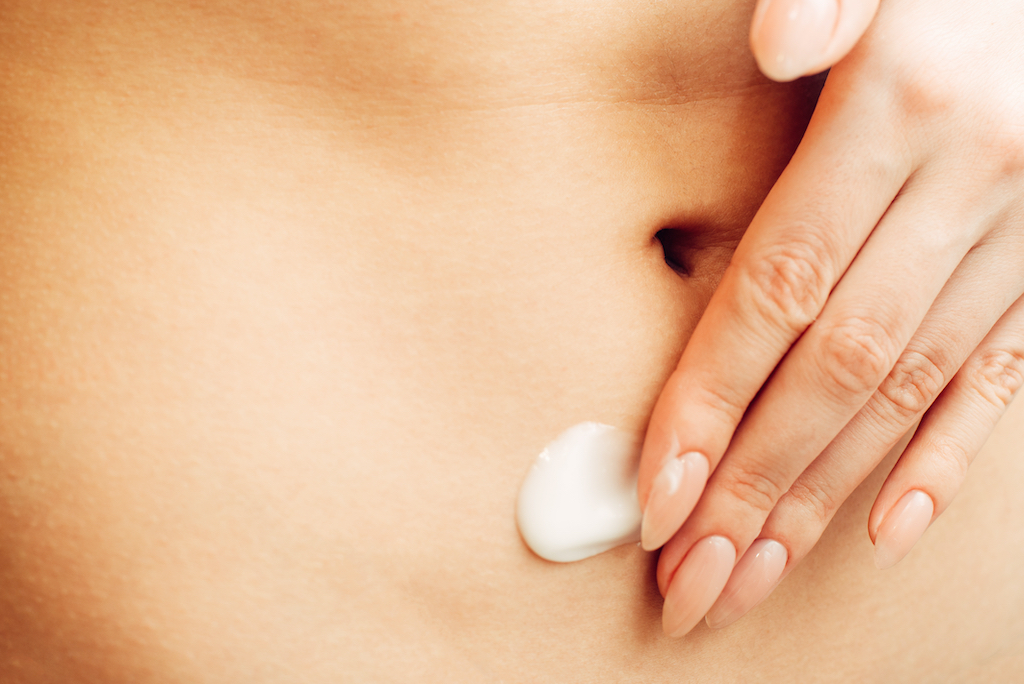 Photo Credit: ShutterstockAvoid Irritants
Photo Credit: ShutterstockAvoid Irritants
In order to promote healing and decrease residual scarring, irritants such as UV light or harsh fabrics should be avoided. Apply sunscreen to the scar if there will be sun exposure and avoid wearing tight pants or abrasive fabrics.
Proper Nutrition
A healthy, well-balanced diet not only helps you maintain your figure after abdominoplasty but also promotes wound healing after your surgery. Certain nutrients in food are essential to the process of wound healing and proper scar formation. You should eat a diet with a sufficient amount of these nutrients well before your procedure as well as after your procedure. Nutrients essential for wound healing include protein, carbohydrates, vitamins A, C, and D, and zinc. Protein is essential for building collagen, and vitamin C and zinc are involved in its cross-linking. Carbohydrates are essential for building the backbone of amino acids and vitamin D has been shown to promote wound healing.
Exercise
Initially, you should limit exercise and strenuous activity for about six weeks after the procedure while your surgical site heals. However, it is important to keep moving with light walking, sitting, and standing during this time to prevent blood clots. After your incision has healed, you can slowly introduce more exercise with guidance from your plastic surgeon. After you have fully healed from the surgery, an exercise routine that includes cardio and strength training is optimal to maintain both your figure and physical health.
For more information, visit Dr. Samuel Lin's social media:



